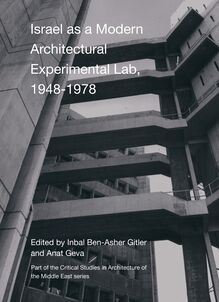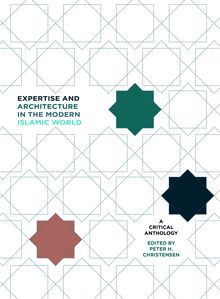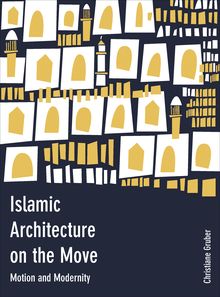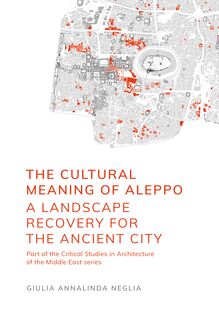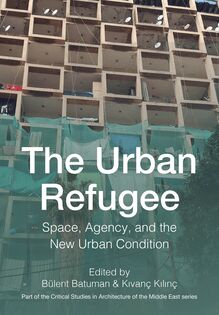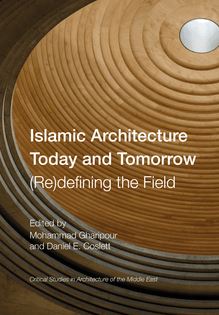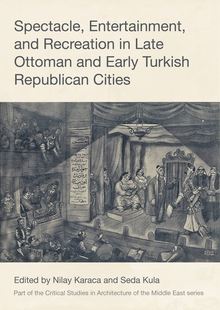-
 Univers
Univers
-
 Ebooks
Ebooks
-
 Livres audio
Livres audio
-
 Presse
Presse
-
 Podcasts
Podcasts
-
 BD
BD
-
 Documents
Documents
-
- Cours
- Révisions
- Ressources pédagogiques
- Sciences de l’éducation
- Manuels scolaires
- Langues
- Travaux de classe
- Annales de BEP
- Etudes supérieures
- Maternelle et primaire
- Fiches de lecture
- Orientation scolaire
- Méthodologie
- Corrigés de devoir
- Annales d’examens et concours
- Annales du bac
- Annales du brevet
- Rapports de stage
La lecture à portée de main
Vous pourrez modifier la taille du texte de cet ouvrage
Découvre YouScribe en t'inscrivant gratuitement
Je m'inscrisDécouvre YouScribe en t'inscrivant gratuitement
Je m'inscrisEn savoir plus
Vous pourrez modifier la taille du texte de cet ouvrage
En savoir plus

Description
Even a casual observer can spy traces of Islamic architecture and design on buildings all over the world, a reminder that artistic traditions and visual culture have never been limited to their region or country of origin, but rather are highly diffusible.
This book brings together scholars from architectural studies, design, art history and other fields to challenge and expand concepts of Islamic architecture. Ranging from eighteenth-century Ottoman tents to manifestations of Islamic motifs in 1960s Hawaii, this richly illustrated volume raises key questions about Islamic architecture, and, more broadly, about how we can rethink our understanding of material, artistic and cultural mobility in the modern world.
Acknowledgements
Chapter 1: Islamic Architecture on the Move
Christiane Gruber
Chapter 2: Karbala in Lucknow: An Itinerary of Architectural Mobility
Elise Kamleh and Katherine Bartsch
Chapter 3: The Mobile Matrix: The Hijaz Railway as Ritual Space and Generator of Space
David Simonowitz
Chapter 4: Fabricating a New Image: Imperial Tents in the Late Ottoman Period
Ashley Dimmig
Chapter 5: Mobility and Ambivalences: Negotiating Architectural Identities during Khedive Ismail’s Reign (1863–79)
Marwa M. El-Ashmouni
Chapter 6: ‘In the Absence of Originals’: Replicating the Tilework of Safavid Isfahan for South Kensington
Moya Carey
Chapter 7: Relocating to Hawai‘i: Dwelling with Islamic Art at Doris Duke’s Shangri La
Olga Bush
Chapter 8: The Urban Fabric of Cairo: Khayamiya and the Suradeq
Sam Bowker
Note on Contributors
Sujets
Informations
| Publié par | Intellect Books |
| Date de parution | 01 août 2016 |
| Nombre de lectures | 0 |
| EAN13 | 9781783206407 |
| Langue | English |
| Poids de l'ouvrage | 2 Mo |
Informations légales : prix de location à la page 0,3840€. Cette information est donnée uniquement à titre indicatif conformément à la législation en vigueur.
Extrait
Islamic Architecture on the Move is the first book in the series Critical Studies in Architecture of the Middle East. The series is edited by Mohammad Gharipour (Morgan State University, Baltimore) and Christiane Gruber (University of Michigan, Ann Arbor).
Critical Studies in Architecture of the Middle East is devoted to the most recent scholarship concerning historic and contemporary architecture, landscape and urban design of the Middle East and of regions shaped by diasporic communities more globally. We invite interdisciplinary studies from diverse perspectives that address the visual characteristics of the built environment, ranging from architectural case studies to urban analysis.
First published in the UK in 2016 by
Intellect, The Mill, Parnall Road, Fishponds, Bristol, BS16 3JG, UK
First published in the USA in 2016 by
Intellect, The University of Chicago Press, 1427 E. 60th Street, Chicago, IL 60637, USA
Copyright © 2016 Intellect Ltd
All rights reserved. No part of this publication may be reproduced, stored in a retrieval system, or transmitted, in any form or by any means, electronic, mechanical, photocopying, recording, or otherwise, without written permission.
A catalogue record for this book is available from the British Library.
Series: Critical Studies in Architecture of the Middle East
Series ISSN: 2059-3562
Contents editor: Patricia Blessing
Cover designer: Emily Dann
Copy-editor: MPS Technologies
Production manager: Katie Evans
Typesetting: Contentra Technologies
Print ISBN: 978-1-78320-638-4
ePDF ISBN: 978-1-78320-639-1
ePUB ISBN: 978-1-78320-640-7
Printed and bound by Gomer, UK
Contents
Acknowledgements
Chapter 1: Islamic Architecture on the Move
Christiane Gruber
Chapter 2: Karbala in Lucknow: An Itinerary of Architectural Mobility
Elise Kamleh and Katherine Bartsch
Chapter 3: The Mobile Matrix: The Hijaz Railway as Ritual Space and Generator of Space
David Simonowitz
Chapter 4: Fabricating a New Image: Imperial Tents in the Late Ottoman Period
Ashley Dimmig
Chapter 5: Mobility and Ambivalences: Negotiating Architectural Identities during135 Khedive Ismail’s Reign (1863–79)
Marwa M. El-Ashmouni
Chapter 6: ‘In the Absence of Originals’: Replicating the Tilework of Safavid Isfahan for South Kensington
Moya Carey
Chapter 7: Relocating to Hawai‘i: Dwelling with Islamic Art at Doris Duke’s Shangri La
Olga Bush
Chapter 8: The Urban Fabric of Cairo: Khayamiya and the Suradeq
Sam Bowker
Note on Contributors
Acknowledgements
The essays in this volume were first published in the International Journal of Islamic Architecture (IJIA), volume 3.2 (2014). The contributors wish to thank Patricia Blessing, desk editor at IJIA, for having copy-edited all articles. Her hard work and keen eye for detail proved pivotal for our collective endeavor. Moreover, we are grateful to the History of Art Department at the University of Michigan for having provided a generous publication subvention that allowed for the inclusion of all color images in the present publication.
Christiane Gruber
Editor
Chapter 1
Islamic Architecture on the Move
Christiane Gruber
T he word ‘building’ is philanthropic in the domain of meaning. As a gerund or verbal noun, it connotes motion and process as internally generated or else incited by an external agent. At a more conceptual level, it also points to a constructive act that rejects finality to instead capture – even celebrate – an ongoing state of incompletion. Transcending stasis and fixity, many buildings indeed flourish in a zone of in-betweenness, straddling genesis and (a nominal) end, addition and manipulation, destruction and survival. In their visual and material manifestations, they showcase the state of contingency along with the seemingly endless creative possibilities it entails.
Unsurprisingly, buildings and architectural forms in the Islamic world display mobility of all sorts, in the process generating complex connectivities across time and space. Like built forms per se, the exact realms encompassed by the lands of Islam (Dar al-Islam) habitually eschew attempts at precise location and definition. Unmoored and trotting the globe all the way to China, Europe, America and Hawai’i, architectural knowledge, practices and motifs typically associated with Islamic lands attest to ongoing artistic interactions on a global scale. While such exchanges have certainly accelerated during the modern period thanks to travel, trade and new technologies, they are by no means a new phenomenon. On the contrary, buildings have always been on the move, both inside and outside territories traditionally associated with Islam.
Building upon older scholarship while breaking new ground, the contributors to this volume offer new insights into, as well as challenges and expansions of, the definition of ‘Islamic’ architecture through its panoply of manifestations, receptions and various trajectories from the eighteenth century to the present day. Collectively, the essays explore the many ways in which architectural practices and built forms can be deracinated from their ‘original’ contexts and locales, migrate to other milieus, and appear in new and unexpected contexts. Through movement, exchange, transfer, assemblage, replication, response and revival, a variety of novel configurations both generate and echo historically and culturally significant discourses. Without a doubt, such processes of interaction challenge the intertwined concepts of tradition and authenticity, both notional constructs that frequently rely on the sanction of precedent in order to fashion what is perceived as ‘modern’. 1
Beyond stylistic and taxonomical questions, there are many ways in which Islamic architecture ‘on the move’ can be studied, regardless of methodological approach and theoretical conceptualization. Not restricting themselves to a single scholarly method or intellectual model within the humanities and social sciences, the contributors to this volume embrace a plurality of perspectives and paradigms. Some authors, such as Ashley Dimmig, examine the notion of the threshold as a liminal place for the visual and material performance of both self and polity at moments of increasing cultural and artistic exchange, especially as manifest in tentage traditions of the late Ottoman Empire. 2 Inspired by James Clifford’s work on culture and travel, Marwa el-Ashmouni explores the various ‘roots’ and ‘routes’ of architectural expression along with its function as a ‘contact zone’ 3 in the Khedival palace architecture of Cairo. Still others, including Moya Carey and Olga Bush, highlight practices of relocation and translation in British museum and American domestic contexts, 4 in which an Islamicate Orient is both ‘imagined’ via the collecting of architectural drawings and materials as well as ‘imaginary’ through an array of conspicuous absences. 5 Last but not least, Katharine Bartsch, Elise Kamleh, David Simonowitz and Sam Bowker explore how architecture can be ‘on the move’ through the transfer of architectural typologies, designs and models – whether through the Shi‘i shrines and architectural floats of Lucknow, the Ottoman mosque-wagon that made its way down the Hijaz Railway, or contemporary tent traditions in Cairo.
Springing from one place to the next, and engaging in peregrination and transposition, architectural variability persistently thwarts attempts at uniformity and cohesion in scholarly methods. On the contrary, changes of forms and practices invite an unshackling from received models, including those that seek out a perceived unity in variety. In order to harmonize with the material evidence, which so evidently impugns constancy and homogeneity, scholarly approaches that highlight imbrications and entanglements are perhaps best suited for the task at hand, however untidy these may appear. 6 Consequently, this volume embraces the generative potential of instability by exploring the dynamics of architectural expression through a plurality of scholarly methods, all of which aim to explore the mechanics and outcomes of architectural mobility within a modern interconnected world.
The question of mobility – of humans, ideas, things and even places – has preoccupied researchers as of late. Building upon the ‘cultural’ and ‘pictorial’ turn of the second half of the twentieth century, a critical mass of scholarship that has gathered momentum over the past decade aims to investigate the so-called ‘mobility turn’ of the contemporary period. Proponents of the newly emergent mobilities paradigm include Michael Guggenheim, Ola Söderström, Mimi Sheller and John Urry. 7 Collectively, these scholars (and others) prefer to stress networks, flows, interlinks and diffusions, in the process arguing against insularity and fixedness. They do not entirely shed sedentarist paradigms, however. Instead, they view sedentary and nomadic cultures as simultaneous, much as scholars of globalization consider cultural change and fixity as mutually constitutive. 8 Like people and media, architectural knowledge and traditions likewise fluctuate within circulatory systems, in which they are imbricated in and contribute to regimes of value. 9 Such systems and regimes are so elastic that recently scholars have formulated the notion of ‘liquid’ modernity, in which any attempt at differentiating the self from the other, the here from the there, at times appears a rather entropic exercise. 10
Along with the new mobilities paradigm, increasing scholarly attention to movement, and the pendant notion of a liquid modernity, emerges our collective question: what can another body of evidence comprised of built forms and practices associated with Islamic lands and cultures contribute to the ways in which mutability in the modern world is conceptualized and studied? In other words, rather than simply applying relatively novel theoretical models to another corpus of (typically neglected) mate
-
 Univers
Univers
-
 Ebooks
Ebooks
-
 Livres audio
Livres audio
-
 Presse
Presse
-
 Podcasts
Podcasts
-
 BD
BD
-
 Documents
Documents
-
Jeunesse
-
Littérature
-
Ressources professionnelles
-
Santé et bien-être
-
Savoirs
-
Education
-
Loisirs et hobbies
-
Art, musique et cinéma
-
Actualité et débat de société
-
Jeunesse
-
Littérature
-
Ressources professionnelles
-
Santé et bien-être
-
Savoirs
-
Education
-
Loisirs et hobbies
-
Art, musique et cinéma
-
Actualité et débat de société
-
Actualités
-
Lifestyle
-
Presse jeunesse
-
Presse professionnelle
-
Pratique
-
Presse sportive
-
Presse internationale
-
Culture & Médias
-
Action et Aventures
-
Science-fiction et Fantasy
-
Société
-
Jeunesse
-
Littérature
-
Ressources professionnelles
-
Santé et bien-être
-
Savoirs
-
Education
-
Loisirs et hobbies
-
Art, musique et cinéma
-
Actualité et débat de société
- Cours
- Révisions
- Ressources pédagogiques
- Sciences de l’éducation
- Manuels scolaires
- Langues
- Travaux de classe
- Annales de BEP
- Etudes supérieures
- Maternelle et primaire
- Fiches de lecture
- Orientation scolaire
- Méthodologie
- Corrigés de devoir
- Annales d’examens et concours
- Annales du bac
- Annales du brevet
- Rapports de stage
